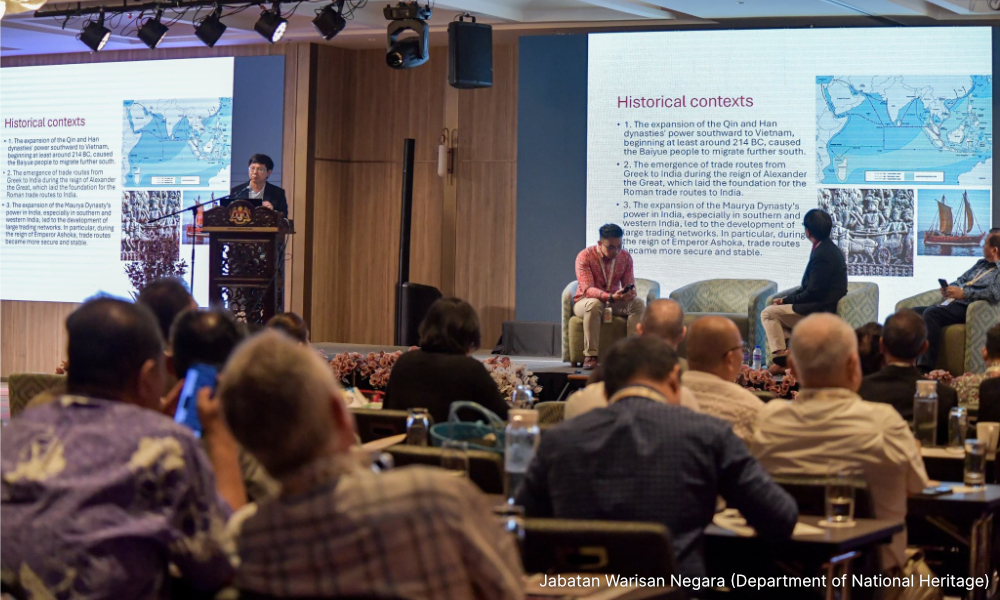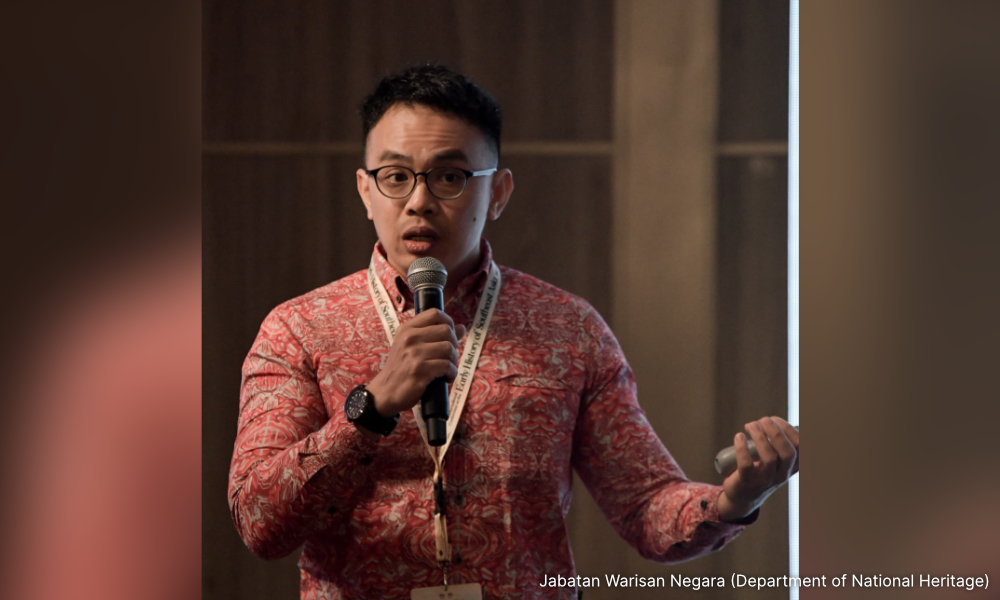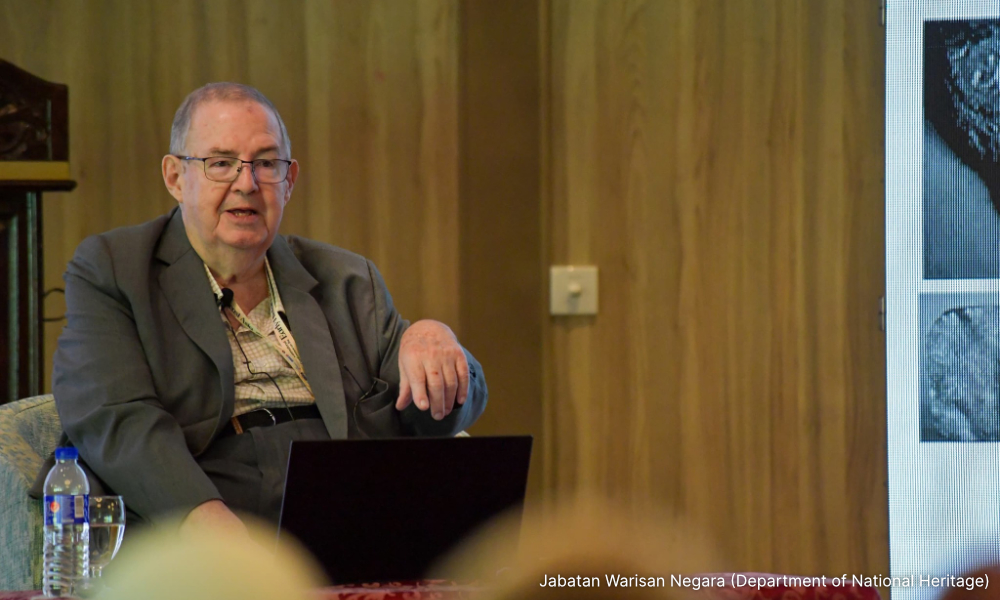The International Conference on the Early History of Southeast Asia, organised by the National Heritage Department in close collaboration with local universities, particularly Universiti Sains Malaysia (USM), concluded yesterday, May 20.
This two-day conference, held at the Ascott Hotel in Penang from May 19-20, brought together a diverse group of academicians and researchers from Malaysia, Thailand, Indonesia, Cambodia, India, China, and several other countries.
The conference was both timely and necessary, given the numerous historical and archaeological gaps in our understanding of the rich and varied pre-colonial history of Southeast Asia.
While the overarching theme focused on the region’s early historical developments, there was a particular emphasis on Kedah Tua or the Bujang Valley - a key archaeological and historical zone spanning the present-day states of Kedah and Penang.
Rather than framing the region’s past as merely “ancient history”, the conference delved into a dynamic period that witnessed the emergence of major civilisational forces such as the Srivijaya Kingdom and its complex interactions with the Bujang Valley.
A number of significant papers were presented. Scholars from Indonesia offered compelling historical evidence of longstanding trade and maritime ties between the regions of Palembang and Java with the Bujang Valley.

These ties reinforce the view of Southeast Asia as a vibrant and interconnected maritime region well before the arrival of Western colonial powers.
Religion, trade, and power in Early Southeast Asia
A researcher from Odisha, India, highlighted the Buddhist influences from the Kalinga region between the 4th and 7th centuries CE. These influences, he argued, were crucial in shaping religious and cultural practices in early Southeast Asia, including sites such as the Bujang Valley.
Chinese interaction with the Malay-Polynesian world was explored through the changing meaning of the term Kunlun. Initially rooted in cosmological thought, this concept gradually evolved to reflect more material and political concerns in Chinese perspectives of the western regions.
A Cambodian academic offered insights into the iron ore industry in the Khmer region, positing that it may have been influenced by earlier metallurgical developments in Kedah. This perspective adds a layer of economic complexity to our understanding of interregional linkages in ancient Southeast Asia.
The final plenary session, chaired by USM academician Nasha Rodziadi Khaw, brought together nearly all speakers for a comprehensive discussion on the interregional interactions centred on the Bujang Valley.

This session further underscored the site’s pivotal role in understanding early Southeast Asian civilisation.
Strikingly, the Chola invasion of Kedah in the 11th century - a critical episode in the region’s history - was not addressed, even by the Indian delegate. It is unclear whether this omission was intentional or simply an oversight in the focus on earlier periods.
Among the standout presentations was that of renowned scholar Peter Skilling. His nuanced treatment of the region’s religious landscape before the advent of Islam in the 15th century stood out for its depth and balance.
Skilling avoided reducing Southeast Asia’s religious history to a binary Hindu-Buddhist narrative, instead presenting a more composite picture of diverse belief systems.

Regrettably, the conference did not sufficiently address the role of animism in the Bujang Valley, nor did it explore whether animistic practices coexisted with Hindu-Buddhist traditions.
This silence extended to a broader issue: the unaddressed debate among some critics that Islam supplanted animism rather than the established Hindu-Buddhist systems.
A few additional sessions could have explored these religious contentions more thoroughly, especially in the context of the valley’s evolving spiritual landscape.
History at risk in Bujang Valley
While the conference was undoubtedly a significant step forward, it also illustrated the inherent limitations of such gatherings. A single event cannot encompass all relevant questions, but there is a pressing need for future academic efforts to be framed by clearly defined epistemological concerns.
Papers should not only present historical evidence but also seek to identify research lacunae and advance new understandings.

As historical and archaeological research is evidence-based, the spectre of Orientalism should not deter scholars from pursuing rigorous and grounded inquiries. The goal must be to generate new knowledge rather than merely interpret existing evidence.
The Malaysian government has demonstrated some degree of commitment to supporting historical research. However, the lack of political will to officially designate the Bujang Valley as a national or Unesco heritage site remains troubling.
This hesitation, perhaps rooted in fears that such recognition might reinforce perceptions of the valley’s Hindu-Buddhist heritage, endangers the preservation of its ancient sites. The destruction of a candi (ancient temple structure) by a contractor some years ago serves as a stark reminder of these risks.
In conclusion, the conference was a critical platform for revitalising interest in the early history of Southeast Asia.
But moving forward, it is essential that scholars and policymakers alike commit to deeper, more focused research - and to the preservation of heritage sites that hold the key to Southeast Asia’s complex and interconnected past. - Mkini
P RAMASAMY is a former Penang deputy chief minister II and Urimai chairperson.
The views expressed here are those of the author/contributor and do not necessarily represent the views of MMKtT.




No comments:
Post a Comment
Note: Only a member of this blog may post a comment.